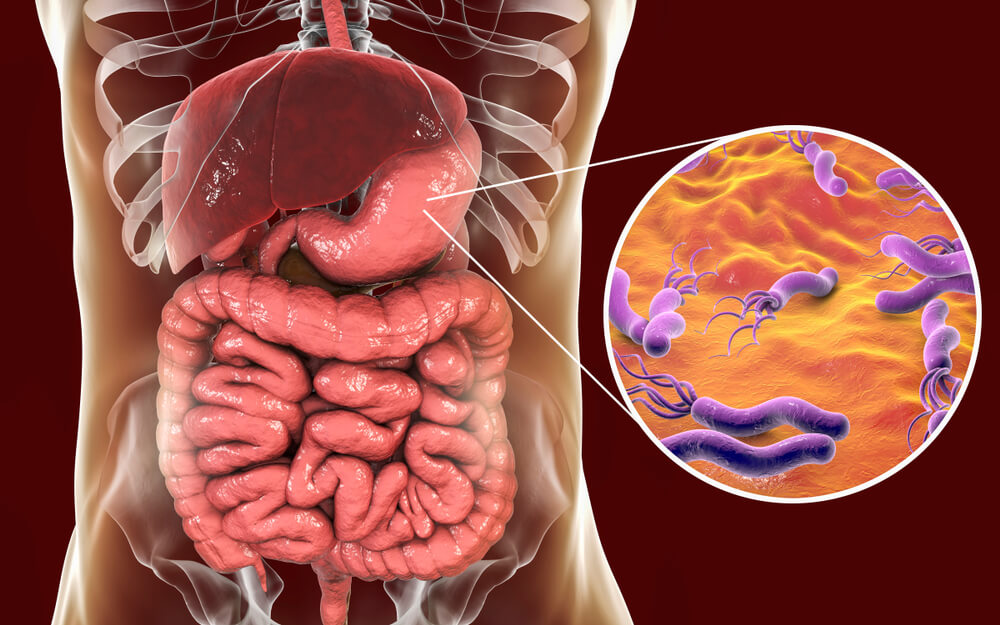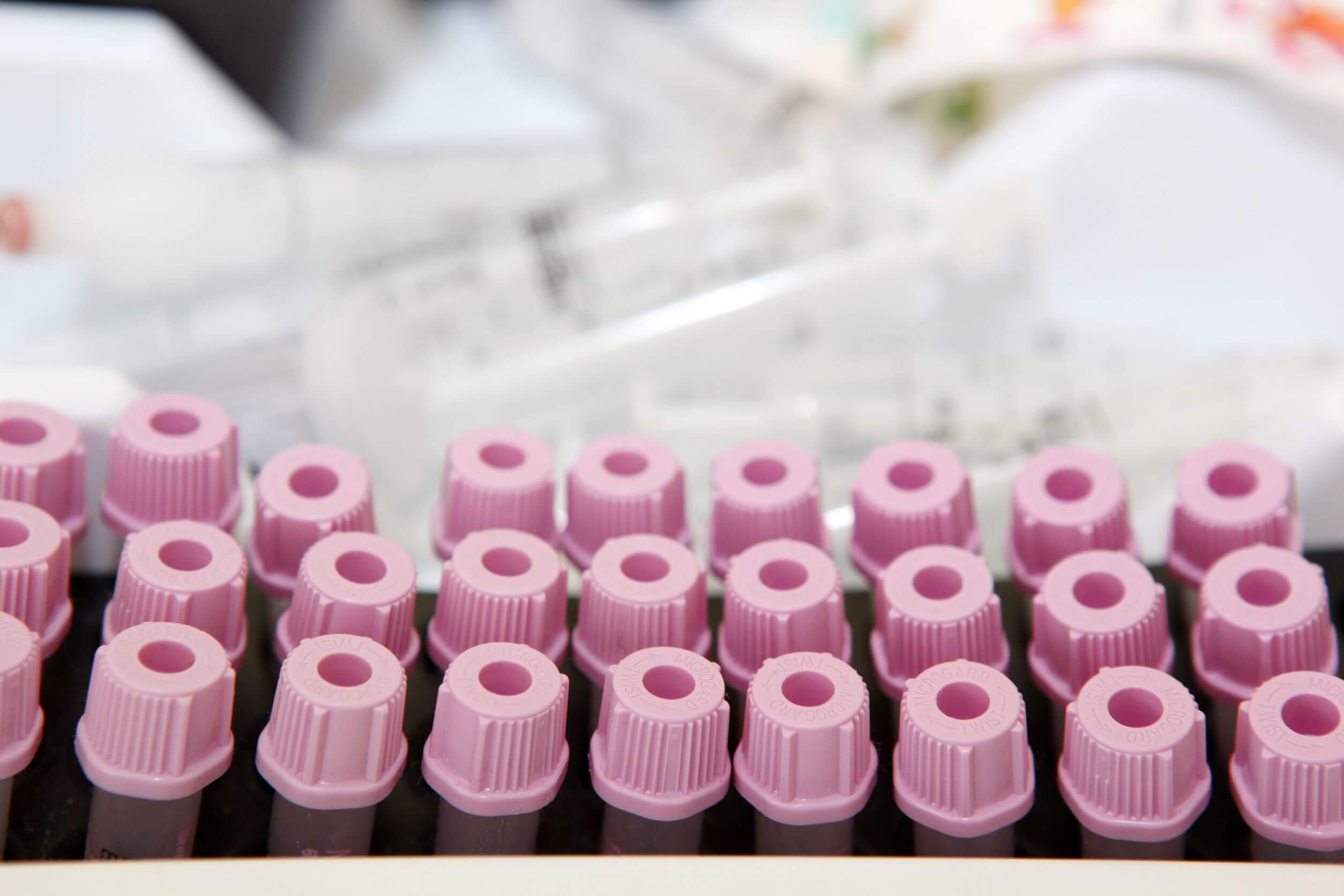Pernicious Anemia: Symptoms, Causes and Treatment

Pernicious anemia is a disease that occurs when the body fails to assimilate vitamin B12 efficiently due to stomach problems.
Although eating habits have some influence on this, they’re generally not the only cause of the problem. So, while improving your diet can be beneficial, it’s not the only way to tackle pernicious anemia.
Remember that vitamin B12 isn’t produced by the body naturally, but is obtained from food. Specifically, those of animal origin, such as red meat, fish, eggs, cheese, and others.
Let’s see more about this type of anemia below.
Causes

The MSD Manual clarifies the following:
“Pernicious anemia is often used synonymously with vitamin B12 deficiency. However, pernicious anemia specifically refers to anemia resulting from vitamin B12 deficiency caused by atrophic metaplastic autoimmune gastritis with loss of intrinsic factors.”
Pernicious anemia is also known as autoimmune gastritis, Biermer’s disease, or Addison-Biermer’s disease. It is caused by atrophic gastritis and is considered a disease of autoimmune origin, according to scientific literature.
However, it can also occur as a result of other health problems, such as Crohn’s disease or Helicobacter pylori infections. Likewise, it can arise as a result of a strict diet, such as the vegan diet, and the continuous consumption of some medications.
Symptoms
As with other types of anemia, pernicious anemia can cause a variety of symptoms. These, in addition to varying in intensity depending on the person, can be similar to those of other diseases. Usually, when anemia is in its early stages, symptoms are usually mild.
For this reason, while the following symptoms could provide clues regarding pernicious anemia, they could also indicate other health problems.
- Fatigue (as in other types of anemia)
- Pallor
- Diarrhea
- Dizziness
- Short of breath
- Weight loss
- Lack of balance
- Arrhythmias (tachycardias)
- Weakness (especially in the extremities)
- Swelling in the abdomen and limbs
- Memory problems and deterioration of general cognitive function.
If anemia isn’t detected and treated early, symptoms can worsen over time, which can significantly affect quality of life.
Diagnosis

For the diagnosis of pernicious anemia, the appointment and physical examination offer a good starting point. However, several tests are necessary to confirm this, such as a complete blood count (CBC), which is a type of blood test.
As stated in a review article titled Autoimmune gastritis: diagnosis and management of an underdiagnosed entity:
“The diagnosis currently requires a high clinical suspicion associated with several tests for its confirmation both in the laboratory as well as endoscopic tests and biopsies with their respective histology.”
Treatment
Improving your diet is highly recommended when you suffer from pernicious anemia. This should be balanced, varied, and sufficient, and preferably, should include regular sources of vitamin B12.
The sources with the highest amount of vitamin B12 are beef liver and clams. Fish, eggs, poultry, and dairy follow closely behind. On the other hand, fortified cereals are another useful source. To identify them, it’s advisable to check the labeling.
But you don’t just need a good diet to treat anemia. As experts point out, “Doctors treat pernicious anemia with injections of vitamin B12, although very high oral doses of vitamin B12 may also be effective.”
Injections into the muscle are given for set periods of time, which can last up to several months. It should be noted that most patients usually notice an improvement from the first week of receiving them.
Now, although there are vitamin B12 supplements, it’s important to consult with your doctor before starting to consume them so that they can provide real benefits. Not all cases are the same and the therapeutic strategy may vary from one to the other.
Once the doctor has offered all their recommendations, it’s best to follow them and combine them with good lifestyle habits. In this way, you won’t only be able to obtain improvements but also to provide yourself with a good quality of life.
Pernicious anemia is a disease that occurs when the body fails to assimilate vitamin B12 efficiently due to stomach problems.
Although eating habits have some influence on this, they’re generally not the only cause of the problem. So, while improving your diet can be beneficial, it’s not the only way to tackle pernicious anemia.
Remember that vitamin B12 isn’t produced by the body naturally, but is obtained from food. Specifically, those of animal origin, such as red meat, fish, eggs, cheese, and others.
Let’s see more about this type of anemia below.
Causes

The MSD Manual clarifies the following:
“Pernicious anemia is often used synonymously with vitamin B12 deficiency. However, pernicious anemia specifically refers to anemia resulting from vitamin B12 deficiency caused by atrophic metaplastic autoimmune gastritis with loss of intrinsic factors.”
Pernicious anemia is also known as autoimmune gastritis, Biermer’s disease, or Addison-Biermer’s disease. It is caused by atrophic gastritis and is considered a disease of autoimmune origin, according to scientific literature.
However, it can also occur as a result of other health problems, such as Crohn’s disease or Helicobacter pylori infections. Likewise, it can arise as a result of a strict diet, such as the vegan diet, and the continuous consumption of some medications.
Symptoms
As with other types of anemia, pernicious anemia can cause a variety of symptoms. These, in addition to varying in intensity depending on the person, can be similar to those of other diseases. Usually, when anemia is in its early stages, symptoms are usually mild.
For this reason, while the following symptoms could provide clues regarding pernicious anemia, they could also indicate other health problems.
- Fatigue (as in other types of anemia)
- Pallor
- Diarrhea
- Dizziness
- Short of breath
- Weight loss
- Lack of balance
- Arrhythmias (tachycardias)
- Weakness (especially in the extremities)
- Swelling in the abdomen and limbs
- Memory problems and deterioration of general cognitive function.
If anemia isn’t detected and treated early, symptoms can worsen over time, which can significantly affect quality of life.
Diagnosis

For the diagnosis of pernicious anemia, the appointment and physical examination offer a good starting point. However, several tests are necessary to confirm this, such as a complete blood count (CBC), which is a type of blood test.
As stated in a review article titled Autoimmune gastritis: diagnosis and management of an underdiagnosed entity:
“The diagnosis currently requires a high clinical suspicion associated with several tests for its confirmation both in the laboratory as well as endoscopic tests and biopsies with their respective histology.”
Treatment
Improving your diet is highly recommended when you suffer from pernicious anemia. This should be balanced, varied, and sufficient, and preferably, should include regular sources of vitamin B12.
The sources with the highest amount of vitamin B12 are beef liver and clams. Fish, eggs, poultry, and dairy follow closely behind. On the other hand, fortified cereals are another useful source. To identify them, it’s advisable to check the labeling.
But you don’t just need a good diet to treat anemia. As experts point out, “Doctors treat pernicious anemia with injections of vitamin B12, although very high oral doses of vitamin B12 may also be effective.”
Injections into the muscle are given for set periods of time, which can last up to several months. It should be noted that most patients usually notice an improvement from the first week of receiving them.
Now, although there are vitamin B12 supplements, it’s important to consult with your doctor before starting to consume them so that they can provide real benefits. Not all cases are the same and the therapeutic strategy may vary from one to the other.
Once the doctor has offered all their recommendations, it’s best to follow them and combine them with good lifestyle habits. In this way, you won’t only be able to obtain improvements but also to provide yourself with a good quality of life.
-
Contreras Zúñiga, Eduardo, Julián Andrés, Ramírez Cheyne, Raúl Andrés, Vallejo Serna, Leidy Patricia, and Zúñiga Correa. 2008. “Anemia Perniciosa: Descripción de Un Caso Clínico.” http://www.scielo.org.co/pdf/rcg/v23n1/v23n1a11.pdf.
-
Dubón, Sofía, Aroon Baruch, Alex Medina, Laura Oseguera, and Susana Pineda. 2013. “Demencia Reversible Por Déficit de Vitamina B12.” REV MED HONDUR. Vol. 81. http://www.bvs.hn/RMH/pdf/2013/pdf/Vol81-1-2013-9.pdf.
-
Espino, Alberto, Profesor Asistente, and Sara Maquilón. n.d. “Artículo de Revisión Gastritis Autoinmune: Diagnóstico y Manejo de Una Entidad Subdiagnosticada.” Accessed May 28, 2021. https://gastrolat.org/DOI/PDF/10.0716/gastrolat2019n1000.03.pdf.
- Langan RC, Goodbred AJ. Vitamin B12 Deficiency: Recognition and Management. Am Fam Physician. 2017 Sep 15;96(6):384-389. PMID: 28925645.
-
Paz, R De, and F Hernández-Navarro. 2005. “Recomendaciones Terapéuticas Manejo, Prevención y Control de La Anemia Perniciosa.” Nutr. Hosp, no. 6: 433–35. https://scielo.isciii.es/pdf/nh/v20n6/recomendaciones.pdf.
-
Rodríguez De Santiago, E., C. Ferre Aracil, A. García García De Paredes, and V. F. Moreira Vicente. 2015. “Pernicious Anemia. from Past to Present.” Revista Clinica Espanola 215 (5): 276–84. https://doi.org/10.1016/j.rce.2014.12.013.
Este texto se ofrece únicamente con propósitos informativos y no reemplaza la consulta con un profesional. Ante dudas, consulta a tu especialista.







